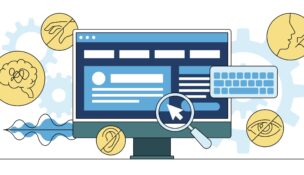How to know if you suffer from digital dementia
Here's what happens when your left brain takes over
Lauren Miller //April 8, 2016//


How to know if you suffer from digital dementia
Here's what happens when your left brain takes over
Lauren Miller //April 8, 2016//
Are you flat-lining in the area of your emotional responses? Feeling like your 'screen saver' is on when people are talking to you? Do you find yourself flipping your attention into every shiny object that crosses your path? What about your retention ability?
A new disorder has slithered its way to the front lines of our awareness: digital dementia. I thought that nomophobia was eye-opening: an anxiety disorder due to being away from your cell phone.
German neuroscientist Manfred Spitzer came up with the term “digital dementia” to describe a negative effect on the brain due to overexposure to technology. Basically, the left hemisphere develops more than the right hemisphere, resulting in an imbalance of the brain.
Did you know that your right brain is responsible for creativity and emotional responses, including connection and the desire for sustainable relationships in your life? The left hemisphere supports fact-finding and more linear thinking.
Having a dominant left hemisphere puts a damper on the ability to feel and even desire emotional connection and responses to life. Dating has shifted; more youth and young adults have moved away from traditional dating, and even in social situations, are commonly seen on the phone rather than present to the people in front of them. Adults are guilty of this as well.
So what do we want to do about it?
As much as technology has been a gift to this generation, it comes with a shadow when overused ― digital dementia, computer hunchback and nomophobia being among the top shadow contenders. Whenever you drag out the negative into the light of your awareness, you flip yourself into a space of empowerment.
Knowing the negative effects of technological addictive behavior gives us an opportunity to build in systems for prevention. Every 90 minutes, your brain goes into a rest zone for 20 minutes; it is known as the Basic Rest Activity Cycle of the Brain (BRAC). Honor your BRAC by taking some of the following heart filled breaks which stimulate the right side of the brain:
Pray/Meditate
Practice Mindful Living: Be Present People and the Moment You are In
Learn to play an instrument
Listen to music
Sing/Whistle/Laugh/Hum
Playful movement/Dance
Communicate loving emotions: I appreciate you; I love you; I am grateful
Random acts of creative kindness
Pull up heart felt moments using your imagination: watching a sunset; playing with a pet; hugging a loved one
Hug someone you care about for 30 seconds
Paint/Draw/Journal…pick up a pen and paper
An attachment is an emotional state of clinging due to the belief that without a certain thing, situation or person you cannot be sufficiently happy, fulfilled, content, satisfied or confident. The following questions will help flush out your level of attachment to your technology:
When you find yourself away from your technology do you feel anxious?
How many times do you check your email in a day?
How often do you check social media?
When you hear a ding; chime; song indicating that you received a message when you are in the middle of something do you drop what you are doing and immediately check the message?
When talking with another person, are you holding your phone, and is it on?
How often do you take technology breaks throughout the day?
What percentage of your attention is taken up by technology (electronics, including the TV; cell phone; computer) when you are with your family? Friends?
With the gift of each new day of life, we are given a constant opportunity to identify and adjust our behavior in such a way that we flip the best version of ourselves to the front lines of our words; thoughts; deeds and actions ― or not. Our choice makes all the difference in the outcomes we experience.
At the end of each day, simply pause and reflect on how your actions either support or flat-line the person you are committed to being during this journey of life. Perhaps resurrecting some "old fashion" ways of communicating and learning would be beneficial to resurrect at this time: writing with pen and paper while learning and or in team meetings; brainstorming with pen and paper; doodling; picking up the phone and calling; writing thank you notes; taking walks while the sun is out.
Unplug from technology and plug into relationships with people. Prevention from digital dementia lies in your daily choice to unplug from digital input as much as possible.
Support Materials: 24-Hour Body Support Created to Flip Your Biology into Supporting: Optimism; Gratitude; Nutrition; Mindfulness; Mediation: Click Here to Learn More

























